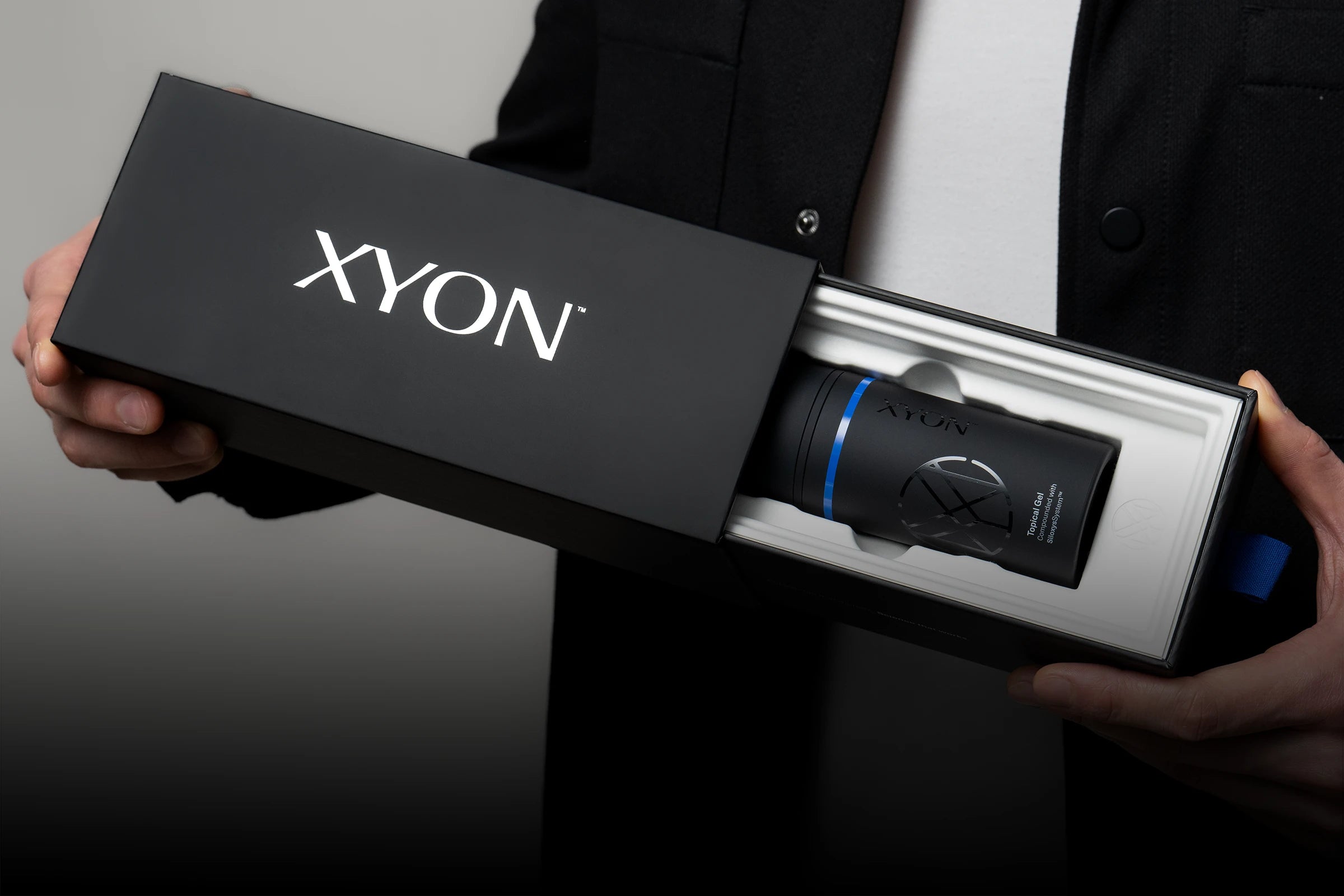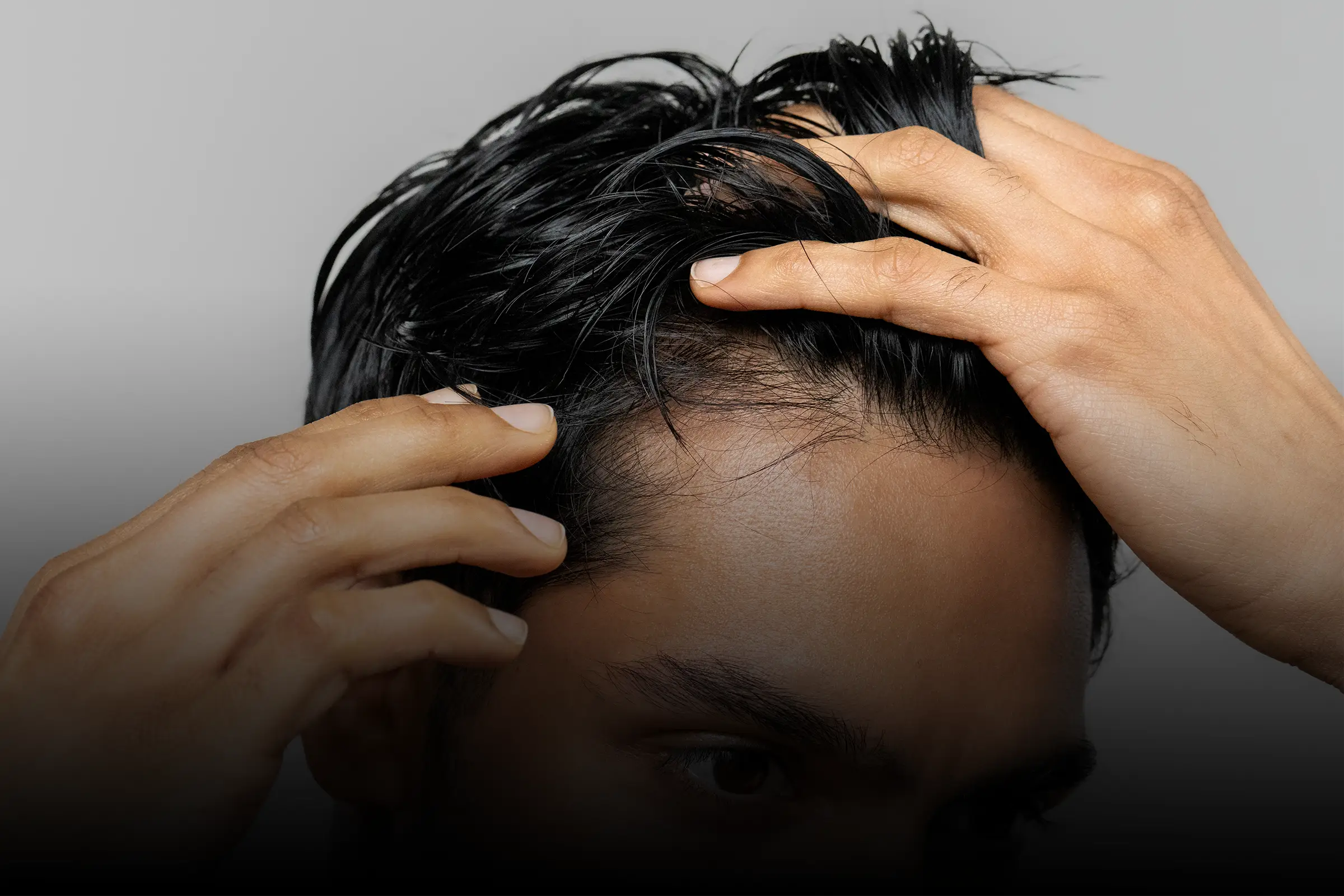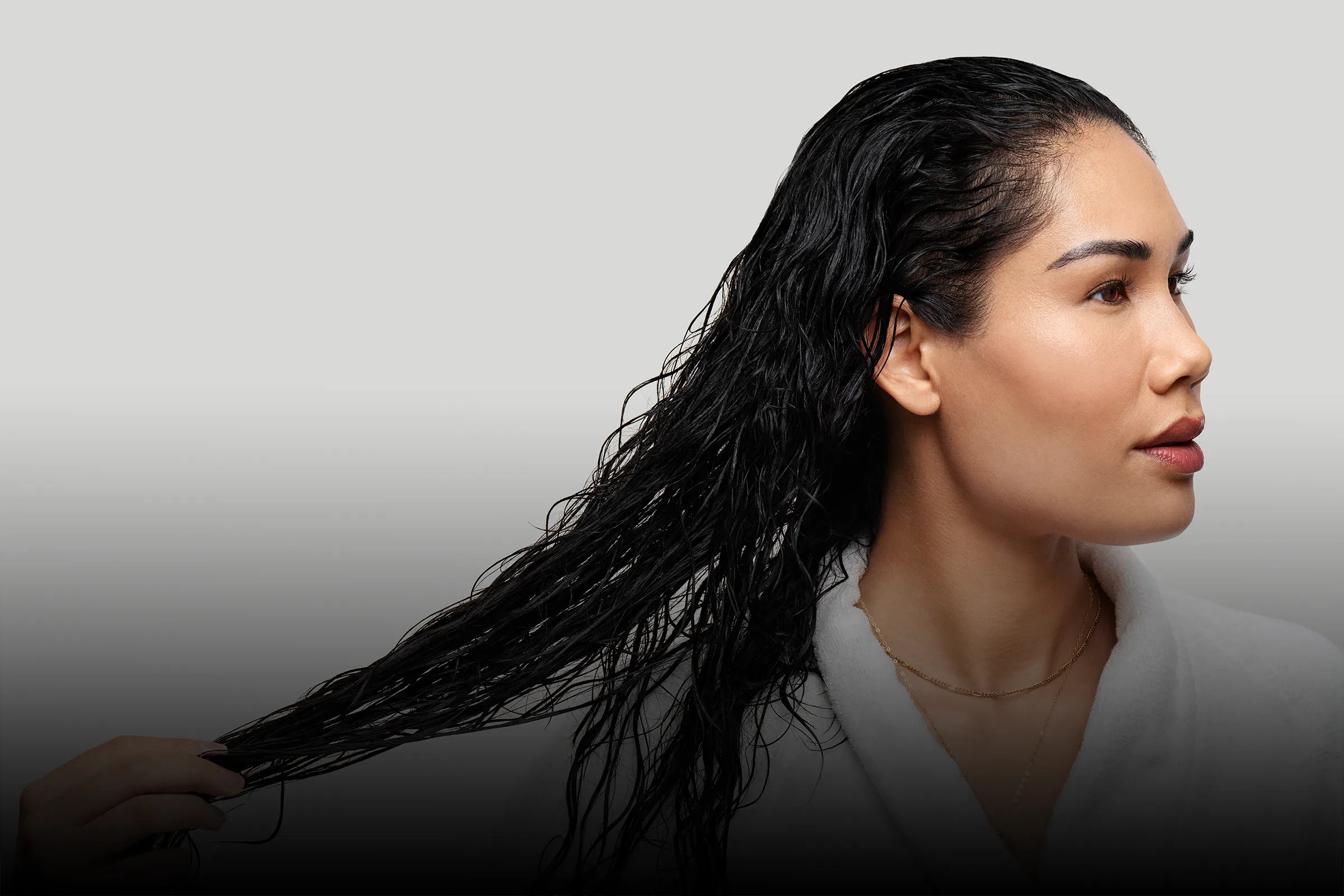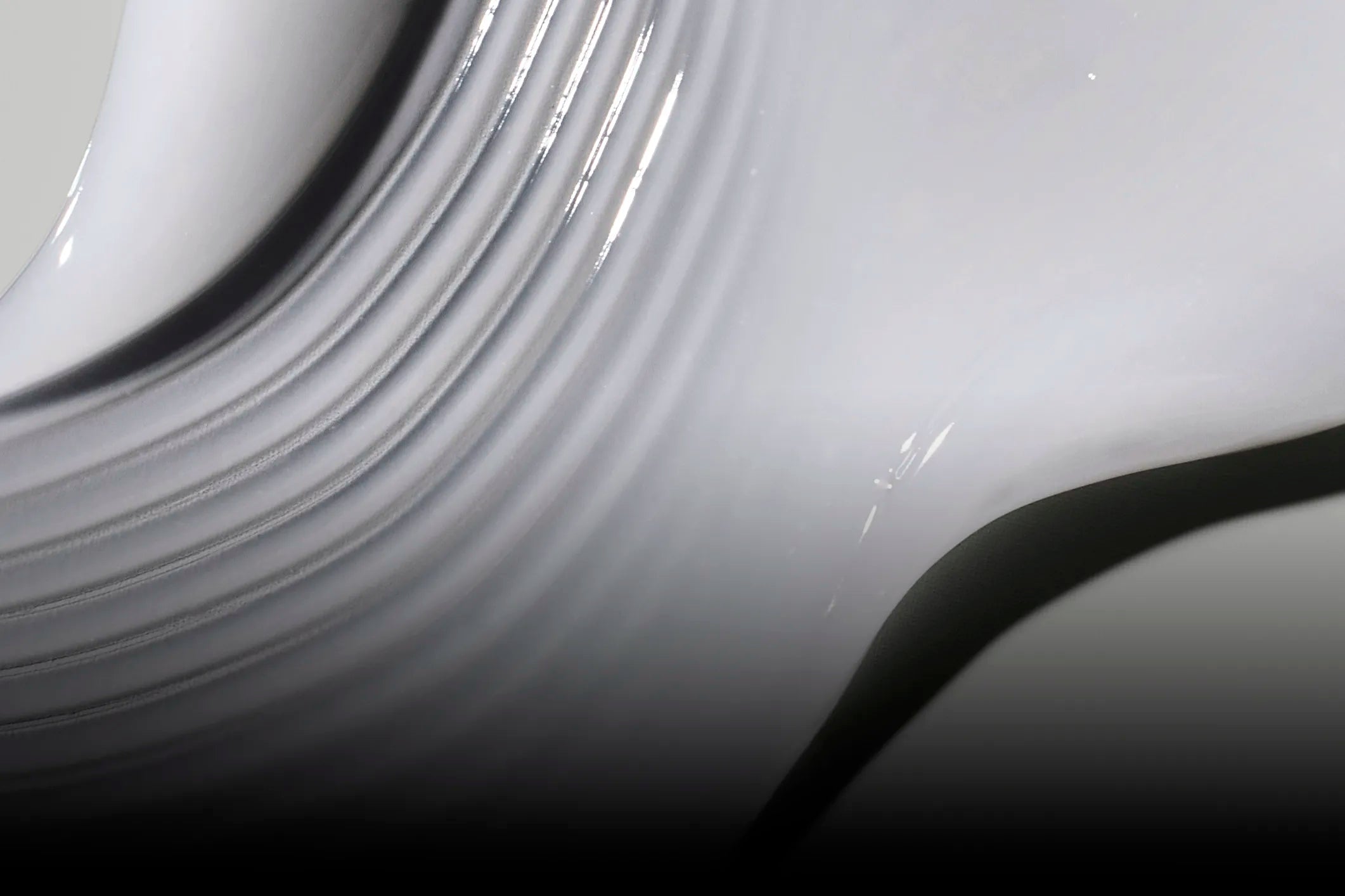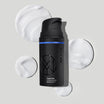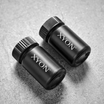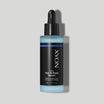If you're considering treating your hair loss, you may have narrowed your options down to dutasteride and finasteride. But it can be difficult to ultimately decide which one is right for you.
In this article, we break down everything you need to know about dutasteride vs finasteride. Read on for more information on dutasteride vs finasteride cost, dutasteride vs finasteride side effects, dutasteride vs finasteride results and what you need to know about these hair loss treatments.
Finasteride vs dutasteride for hair loss
Dutasteride and finasteride can both be used to effectively treat male pattern hair loss. Each drug blocks an enzyme called 5-alpha reductase (5-AR), which produces the hormone DHT (dihydrotestosterone). Elevated DHT is a primary cause of hair loss in men. But how do dutasteride and finasteride work differently?
The 5-AR enzyme is responsible for converting testosterone into DHT. Both dutasteride and finasteride prevent this chemical conversion from happening, reducing the concentration of DHT within the body over time. Thereby, the concentration of DHT at the scalp decreases over time, slowing hair loss and even promoting hair growth in many cases.
There are three different versions of the 5-AR enzyme, which all contribute to DHT production to some degree. Finasteride targets one structural variant, 5-AR type 2. Dutasteride, on the other hand, acts on two types of 5-AR: types 1 and type 2.
Ultimately, dutasteride and finasteride can both be used to treat hair loss. However, dutasteride may be a better option for those with more severe hair loss because of its dual action against the 5-AR enzyme.
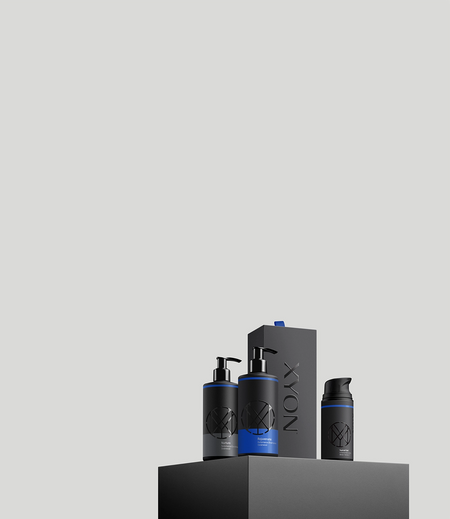

Get the right solution for your hair loss.
XYON is proud to offer finasteride and dutasteride. Connect with an expert today to find out which one is right for you.
Finasteride vs dutasteride side effects
It can be hard to compare dutasteride vs finasteride because these drugs have a similar side effect profile. However, some clinical studies show that the risk can be slightly higher when it comes to dutasteride vs finasteride side effects because of dutasteride’s dual action on the 5-AR enzyme and a more pronounced effect on DHT in circulation. You can find the most commonly reported side effects of these medications below.
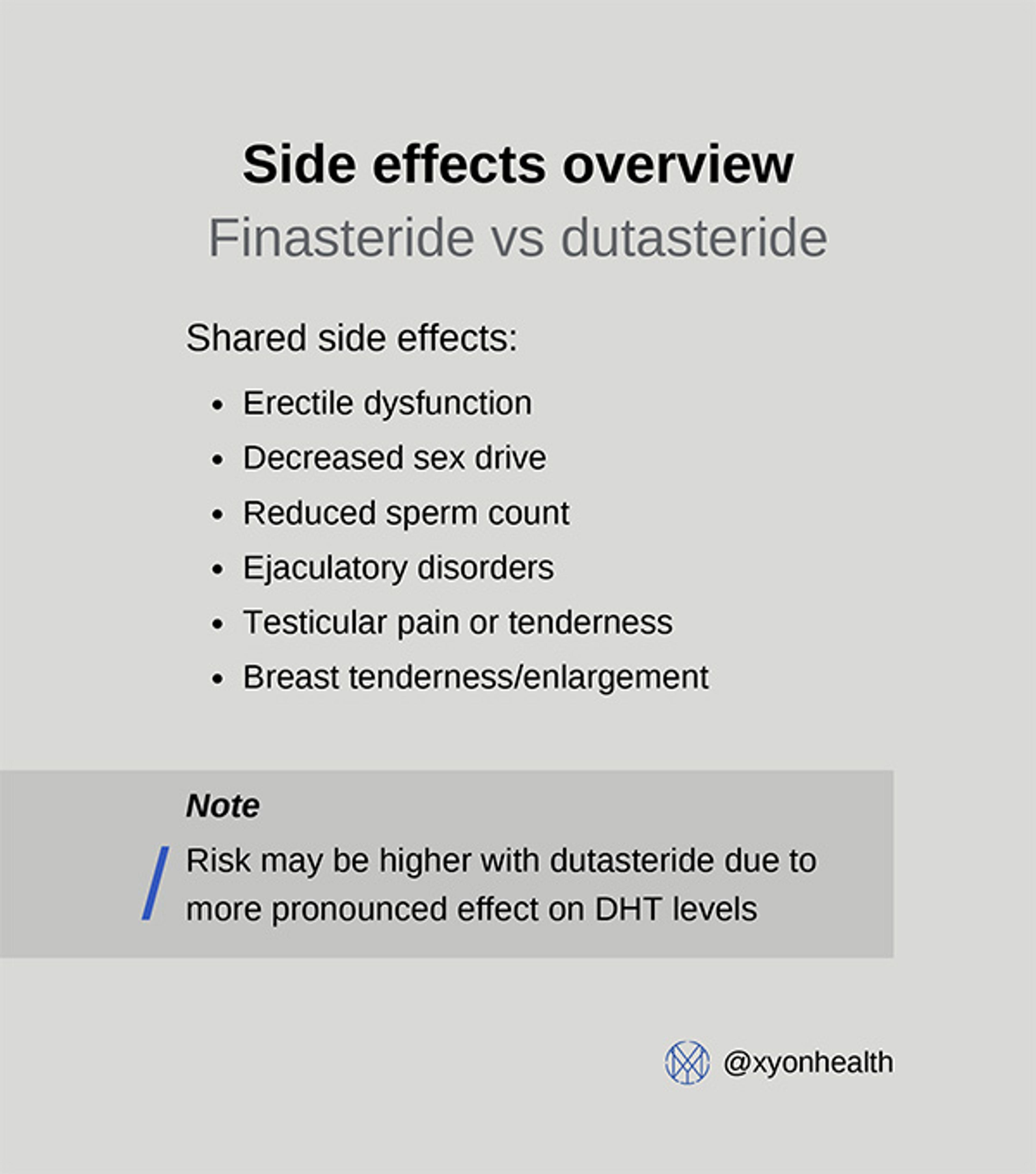
Finasteride vs dutasteride cost
When comparing the cost of dutasteride vs finasteride, there are a few things to consider.
Finasteride is more commonly prescribed as a treatment for hair loss than dutasteride. This generally means that you can get it at a lower cost. Oral finasteride is approved by the FDA (Food and Drug Administration) to treat male pattern hair loss. The generic form of this medication can be a more affordable treatment for hair loss.
Topical finasteride is a compounded medicine, which means it must be prepared on an individual basis. Compounded medicines can only be prepared and dispensed by select compounding pharmacies, which can increase the cost of the medicine. Different topical finasteride formulations can also vary in cost.
Some variables that contribute to the cost of topical formulations include:
- the efficacy of the vehicle (what the medication is compounded into)
- its ability to minimize adverse effects
- how it may feel on the skin
These factors can have an impact on a patient's decision to stick with and follow a treatment, which ultimately can affect their results.
Dutasteride can be a more costly hair loss treatment than finasteride, as the drug often comes at a higher price point. Some patients still opt for dutasteride despite this because it can be more effective than finasteride in treating male pattern baldness. Its demonstrated clinical efficacy may make it a better choice for some patients.
Ultimately, the finasteride vs dutasteride cost debate comes down to individual needs and preferences. Those who are looking for a more affordable option may opt for oral finasteride, while those seeking a more effective treatment regardless of cost may choose compounded topical dutasteride.
In some regions, certain hair loss treatments are covered by health insurance, which can help cover the cost of dutasteride and finasteride. No matter which drug you choose, it's important to make an informed decision when considering finasteride vs dutasteride cost. Ultimately, the best choice is up to each patient and their doctor.
Finasteride vs dutasteride treatments
Dutasteride and finasteride are both 5α-reductase inhibitors. They are most often used to treat benign prostatic hyperplasia (BPH) and androgenetic alopecia (male pattern baldness).
In elevated concentrations, the hormone DHT can cause both prostate enlargement and hair loss. Dutasteride and finasteride help reduce the amount of DHT in the body over time. Lowering DHT levels helps to treat these conditions.
Oral dutasteride and oral finasteride are both approved to treat BPH. But the difference between dutasteride vs finasteride treatments comes down to treating hair loss. Only oral finasteride is approved to treat hair loss. Although topical dutasteride and topical finasteride can be prescribed as compounded medicines to treat male pattern hair loss, a consultation with a doctor is needed to determine if it's suitable for you.
Finasteride vs dutasteride results
Dutasteride and finasteride can both be effective treatments for male pattern hair loss. Some clinical data supports that dutasteride can reduce DHT at the scalp by around 90%, thanks to its dual action on the 5-AR enzyme (Rittmaster et al., 2008). Finasteride is not far behind – it’s thought to reduce scalp DHT by around 70% for most men (Mysore, 2012).
A growing body of clinical data supports that dutasteride is a more potent hair loss treatment and might reign when it comes down to dutasteride vs finasteride results (Shanshanwal & Dhurat, 2017). This drug may be a treatment alternative for men with severe hair loss or patients who have had little or no success with finasteride.
Finasteride vs dutasteride: Takeaway
So what’s the verdict when it comes to comparing dutasteride vs finasteride? Dutasteride is typically the more expensive option. The risk of side effects with dutasteride vs finasteride may be greater as well. However, this medication continues to be an option for many men with hair loss because it has shown to be an effective treatment.
Oral finasteride is still a top recommendation to treat hair loss because it is an FDA-approved hair loss treatment. But topical finasteride can also be considered as a compounded prescription medication to help reduce the risk of side effects that some men experience with oral finasteride.
Dutasteride and finasteride are commonly used to treat male pattern hair loss. These prescription medications work similarly, but may differ with regards to cost, results and side effects. You should always consult with a licensed physician to help you decide which hair loss treatment is ultimately right for you.
